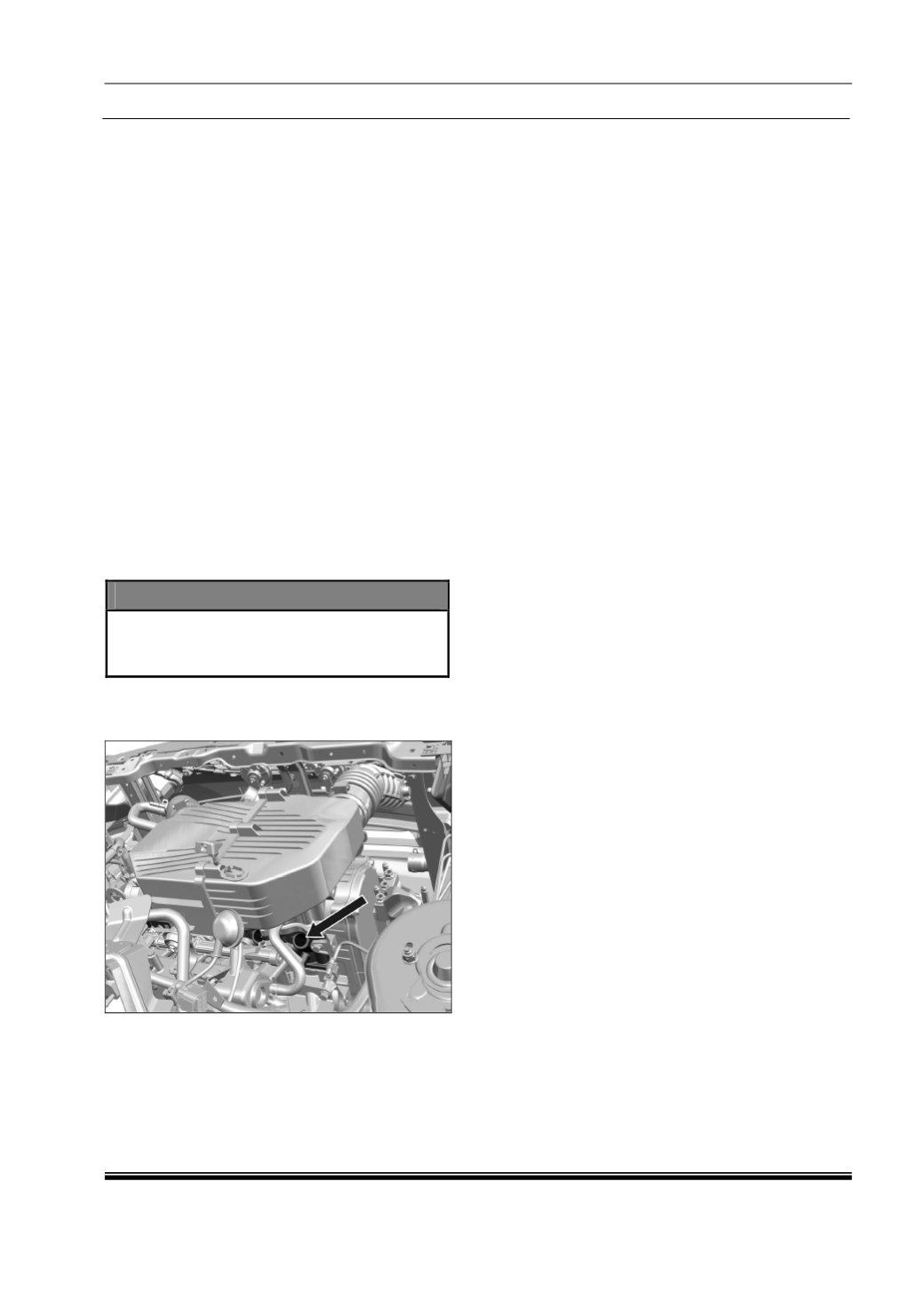
Revotron 1.2T
45
B. Engine Tests :
i.
Engine Compression Test :
Description :
The engine compression test provides
the technician with information regarding the
condition of the engine piston rings/block,
cylinder head gasket, and the valves. Before
performing the engine compression test,
make certain the loss of power or overheating
cannot be attributed to something simple
such as improper fuel, obstructed air filter,
low oil or coolant level, or dragging brakes.
Test Procedure :
1. If possible, bring the engine up to operating
temperature (approximately 80° - 90° C) by
starting and driving the vehicle for several
minutes.
2. Make sure the vehicle battery is fully
charged.
3. Label the spark plug cables and remove all
spark plugs from the engine.
4. Remove the air filter element.
CAUTION
•
Use care not to damage the threads in the
spark plug port when installing the
compression test gauge adapter.
5. Install an engine compression test gauge
(0 to 25 bar) into the number one engine
cylinder spark plug port.
6. Depress the clutch and accelerator pedal fully
and crank the engine
7. Have an assistant read and record the
highest pressure obtained on the gauge.
8. Follow steps 5 through 7 for the three
remaining cylinders, recording the pressure
obtained on the gauge.
9. Compare the compression reading obtained
for each engine cylinder. The minimum
compression is 11±1 bar and the maximum
difference in compression between cylinders
is 1 bar.
10. If the compression reading in a cylinder is
below 9 bar, there may be leakage past the
piston rings or valves. Squirt a several drops
of oil into the cylinder bore and perform the
compression test again.
11. If the compression improves after several
drops of oil are squirted into the cylinder
bore, the piston rings are most likely leaking.
If the compression does not improve, the
valves may be allowing leakage.
12. If the compression between two adjacent
cylinders is below the minimum, there may be
a leak in the head gasket between the
cylinders. If suspecting a blown head gasket
check the engine oil and coolant for signs of
contamination. If coolant mixes with the oil in
the sump, the oil will appear to be a dark,
milky, substance. If cylinder compression is
leaking into the coolant, bubbles will appear
in the coolant reservoir while the engine is
running.


